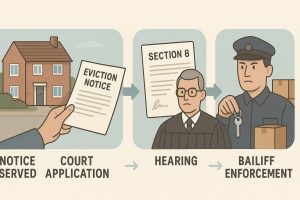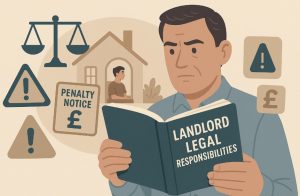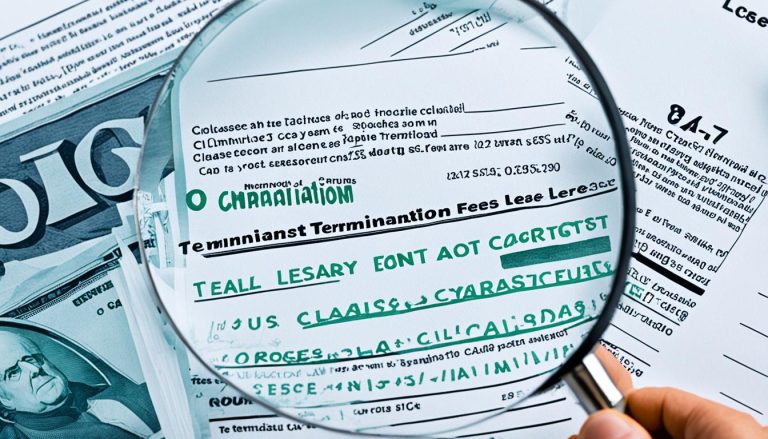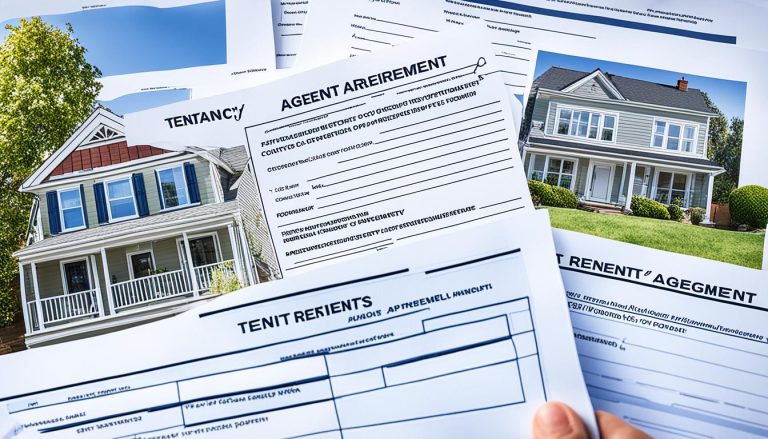Understanding the legal framework surrounding tenant eviction is essential for landlords across the UK. Eviction is a serious legal action and should only be undertaken when there are legitimate grounds and the proper legal procedures are followed.
Whether a landlord is dealing with rent arrears, property damage, or intends to reclaim their property for personal use, understanding the grounds for eviction is the first critical step.
This guide outlines the main legal grounds for evicting tenants, explains Section 8 and Section 21 processes, and highlights important distinctions between residential and commercial tenant evictions.
What Are the Legal Grounds for Tenant Eviction in the UK?
Landlords in the UK can only evict tenants if they have a legitimate legal reason and follow a specific legal procedure.
These procedures are grounded in the Housing Act 1988 (as amended) and related regulations. Evictions typically fall under two legal routes: Section 8 and Section 21 of the Housing Act.
Legal reasons must be clearly documented and communicated through formal notices. In England and Wales, eviction laws are similar, though Scotland and Northern Ireland have distinct legislative frameworks.
Eviction notices must comply with:
- Proper notice periods
- Deposit protection rules
- Licensing requirements (for HMOs)
- Evidence of breach or a valid reason for possession
Understanding these legal requirements is critical to ensuring an eviction is enforceable and lawful.
Section 8 Eviction Grounds Explained

What is a Section 8 Notice?
A Section 8 notice is used when a tenant has breached their tenancy agreement. The landlord must cite one or more grounds from Schedule 2 of the Housing Act 1988.
These grounds are divided into mandatory (where the court must grant possession) and discretionary (where the court decides based on the evidence).
Mandatory vs Discretionary Grounds Under Section 8
Mandatory grounds include:
- Significant rent arrears (usually two months or more)
- Repossession required by the mortgage lender
- Serious anti-social behaviour
Discretionary grounds may involve:
- Irregular payment of rent
- Damage to property
- Nuisance to neighbours
- Breach of specific tenancy clauses
The notice period varies depending on the ground used. Some grounds require as little as 2 weeks’ notice, while others require 2 months.
Common Section 8 Grounds
- Rent Arrears: The tenant owes more than two months’ rent and has failed to make payments despite reminders. This is a mandatory ground for possession.
- Breach of Tenancy Agreement: Examples include unauthorised subletting, keeping pets against the agreement, or conducting business from the premises.
- Anti-Social Behaviour: Includes intimidation, violence, drug misuse, and disturbances affecting neighbours or other tenants.
- Damage to Property: This includes serious damage beyond fair wear and tear, such as smashed windows, holes in walls, or destroyed fittings.
- False Statements: If a tenant knowingly gave false information in their application (e.g., about employment or references), this can be a valid reason for eviction.
Section 21 – The No-Fault Eviction Process

What is a Section 21 Notice?
Section 21 allows landlords to regain possession of their property at the end of a tenancy without needing to prove the tenant did anything wrong. This is only applicable to Assured Shorthold Tenancies (ASTs).
The notice must be properly drafted and served with:
- At least two months’ notice
- Compliance with deposit protection laws
- Valid gas safety certificates and EPCs provided
When Can It Be Used?
- After the fixed term has ended
- During a periodic tenancy (rolling agreement)
- If the tenancy began after October 2015, a prescribed form (Form 6A) must be used
It cannot be used if the tenant’s deposit was not protected in a government-approved scheme or if the property is unlicensed (e.g., in a selective licensing area).
Legal Considerations
Landlords must ensure the notice:
- Is not retaliatory (in response to tenant complaints)
- Is served in writing
- Meets recent regulatory reforms (such as restrictions following tenant complaints to the local council)
Comparison of Section 8 and Section 21
| Criteria | Section 8 | Section 21 |
| Reason required | Yes (specific legal ground needed) | No (end of tenancy only) |
| Notice period | 2 weeks to 2 months (depending) | 2 months (minimum) |
| Grounds for eviction | Breach of contract | End of contract |
| Court hearing | Required if the tenant does not leave | Required if the tenant does not leave |
| Use during tenancy | Yes | Only at the end of the term or periodic |
What Are the Additional Legal Grounds for Eviction?
Beyond the commonly used statutory processes under Section 8 and Section 21, landlords may rely on several additional legal grounds to reclaim possession of a rental property.
These grounds, although less frequently applied, are still valid under certain conditions and are particularly relevant for landlords managing unique or non-standard tenancy arrangements.
Landlord Intends to Move Into the Property
One of the recognised reasons a landlord may seek possession is if they, or a close family member, genuinely intend to occupy the property as their primary residence.
While this ground is more applicable under certain tenancy types, such as assured or regulated tenancies, it can also be used as a discretionary ground under Section 8 (Ground 1) for Assured Shorthold Tenancies, provided that appropriate notice was given at the beginning of the tenancy.
Documentation, such as a sworn statement outlining personal circumstances or relocation plans, can help support this claim.
Major Structural Repairs or Redevelopment
When a property requires significant structural renovations that would make it uninhabitable during the works, eviction may be necessary.
This includes cases where asbestos removal, rewiring, or rebuilding is planned, and the scale of the work cannot be carried out safely while tenants remain in situ.
Landlords should provide evidence such as contractor quotes, surveyor reports, and planning approvals to justify the eviction. Courts will expect landlords to demonstrate that eviction is the only reasonable way to proceed with the development or repair work.
Employment-Linked Tenancies
In some cases, tenants are granted accommodation as part of their employment package commonly seen in caretaking, agricultural, or domestic service roles.
If the employment ends, and the housing was provided strictly as a term of employment, landlords may regain possession under Ground 16 of Section 8. It must be proven that the property was let solely due to the employment status and that the employment has ended lawfully.
Repossession by the Mortgage Lender
If a landlord defaults on their mortgage and the lender repossesses the property, the lender has the right to take possession of the property even if it is tenanted.
Under Ground 2 of Section 8, if the tenancy was entered into after the mortgage was granted and the mortgage lender has provided consent, the lender can initiate possession proceedings.
However, notice of this condition must have been included in the tenancy agreement or provided separately at the outset.
Persistent Late Rent Payments
While not always resulting in large arrears, consistent late payment can form a discretionary ground for eviction. Landlords must show a repeated pattern of delays that disrupts cash flow or causes financial instability.
In such cases, the court may consider the impact on the landlord’s ability to manage the property and whether the delays constitute a material breach of the tenancy agreement.
These additional grounds, while varied, require landlords to carefully document the reasons for eviction and provide supporting evidence when seeking a possession order.
Failure to follow the correct legal process or serve the appropriate notice can result in delays or dismissal of the claim by the court.
What Is the Process of Evicting a Tenant?

Evicting a tenant in the UK involves a structured legal process that must be followed precisely to avoid delays, penalties, or an invalid eviction.
Whether the eviction is due to rent arrears, breach of contract, or the end of a tenancy term, landlords are legally required to adhere to due process, ensuring that the tenant’s rights are protected at every stage.
Step 1: Serve the Correct Notice
The eviction process begins with serving a formal notice to the tenant. The type of notice depends on the grounds for eviction:
- A Section 8 Notice is used when the tenant has breached the terms of the tenancy (e.g., rent arrears or anti-social behaviour).
- A Section 21 Notice is served when the landlord wishes to regain possession at the end of a tenancy, without stating a fault.
The notice must be served in writing, using the appropriate prescribed forms (Form 3 for Section 8 and Form 6A for Section 21), and must clearly state the notice period, which varies depending on the grounds and legal requirements at the time.
Step 2: Wait for the Notice Period to Expire
Tenants must be given sufficient time to vacate the property. This ranges from two weeks to two months or longer, depending on the notice type and tenancy situation. Landlords should not attempt to evict a tenant before this period ends.
Step 3: Apply for a Possession Order
If the tenant does not leave after the notice expires, the landlord must apply to the county court for a possession order. This involves submitting a claim for possession along with evidence supporting the eviction.
Step 4: Court Hearing and Possession Order
If the tenant contests the claim, the court may hold a hearing. If the court grants possession, a date will be set for the tenant to leave.
Step 5: Enforcement
If the tenant still refuses to vacate, the landlord can request enforcement by court-appointed bailiffs or High Court Enforcement Officers to lawfully remove the tenant and recover the property.
Commercial Tenant Evictions in the UK
While residential and commercial tenancies operate under different legal frameworks, landlords of commercial properties must also follow formal procedures.
Step 1: Review the Lease Agreement
The lease will typically outline conditions under which it can be terminated. Landlords must carefully check for clauses regarding forfeiture and notice.
Step 2: Communicate with the Tenant
Engaging the tenant early may lead to voluntary surrender of the lease or alternative solutions. This is especially important when dealing with rent arrears or lease violations.
Step 3: Serve the Correct Notice
- Section 146 Notice: Required under the Law of Property Act 1925
- Outlines breach and provides time for remedy before eviction
Step 4: Decide on Enforcement Route
Two legal pathways exist:
- Peaceable Re-entry: Landlord enters the property without force when unoccupied and changes the locks. This must be lawful and non-violent.
- Court Possession Proceedings: Appropriate for disputes or when re-entry isn’t possible.
Step 5: Enforcement of Possession
If the court grants a possession order, enforcement officers may be required to physically remove the tenant and secure the premises.
What Are the Landlord Obligations and Legal Risks?

Landlords must avoid unlawful eviction tactics at all costs. This includes:
- Changing the locks without a possession order
- Harassing the tenant
- Shutting off essential services like gas, water or electricity
Penalties for illegal eviction may include:
- Fines
- Criminal charges
- Compensation to the tenant
Landlords are also responsible for ensuring tenants can enjoy quiet occupation and that all legal documents are served correctly. Violations may void eviction efforts and result in significant delays and legal expenses.
Conclusion
Evicting a tenant in the UK requires a clear understanding of the legal grounds and adherence to the correct procedures.
Whether using Section 8 for specific breaches or Section 21 for no-fault repossession, landlords must ensure compliance with all regulations to avoid legal consequences.
Being informed about the differences, notice periods, and required documentation helps landlords protect their property interests while respecting tenant rights. Always seek legal advice when in doubt to ensure a fair and lawful eviction process.
FAQs About Tenant Eviction in the UK
Can a landlord evict a tenant without going to court?
A landlord must go to court if the tenant does not leave after the notice period ends. Self-eviction is illegal without a possession order.
What is the minimum notice period for eviction?
Under Section 21, it’s generally two months. Section 8 notice periods depend on the ground used and can be shorter.
Are tenants protected from eviction during winter or holidays?
There are no laws specifically banning winter evictions, but courts may consider personal circumstances.
Can a landlord evict a tenant for not paying council tax?
No. Council tax is the tenant’s responsibility, but non-payment is not a valid ground for eviction under housing law.
How long does it take to evict a tenant through court?
It can take several weeks to a few months, depending on court availability, notice periods, and whether the tenant contests the eviction.
What happens if a tenant refuses to leave after notice?
The landlord must apply for a possession order and may need to involve bailiffs to enforce it.
Do tenants have to pay rent after receiving an eviction notice?
Yes. Tenants are legally obligated to continue paying rent until they vacate the property.






